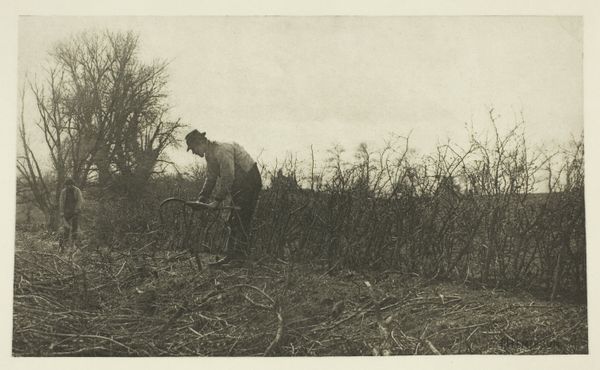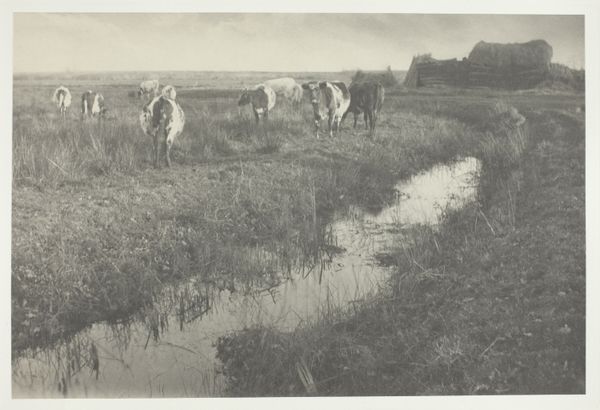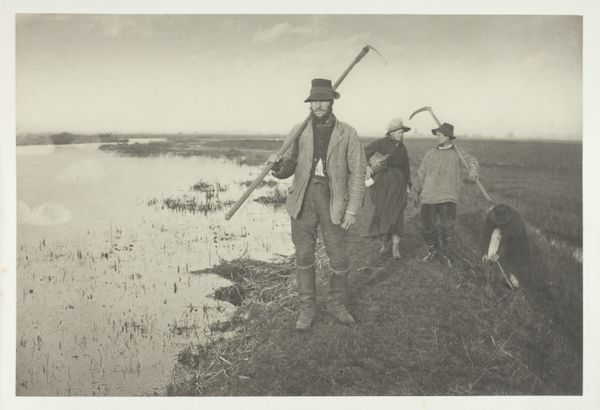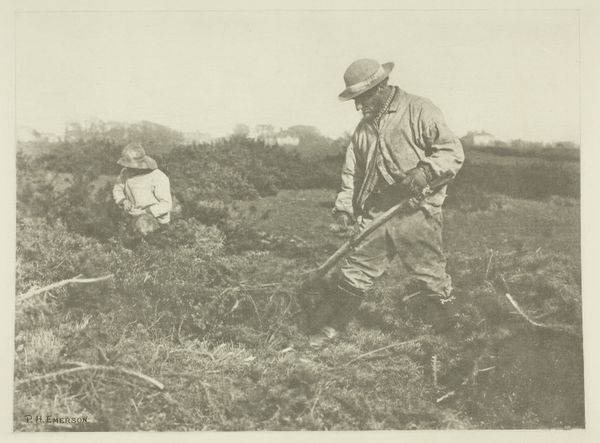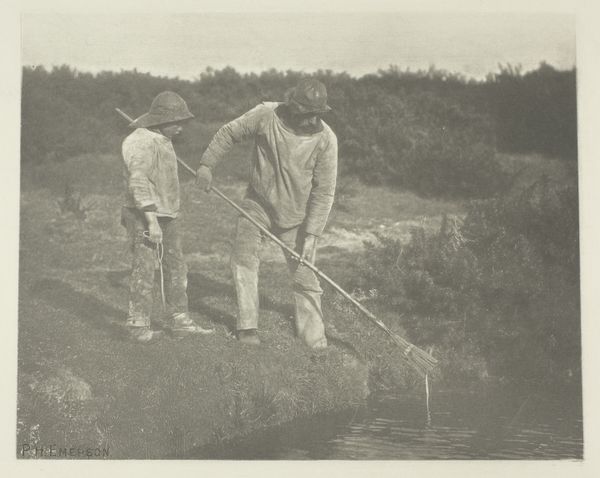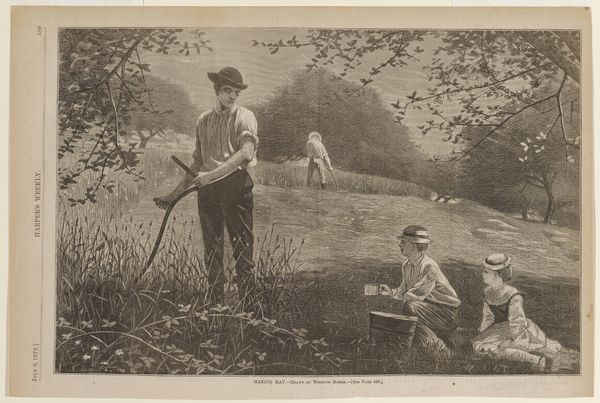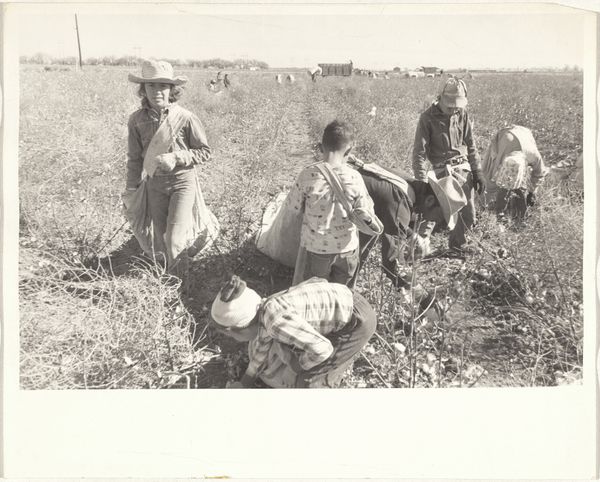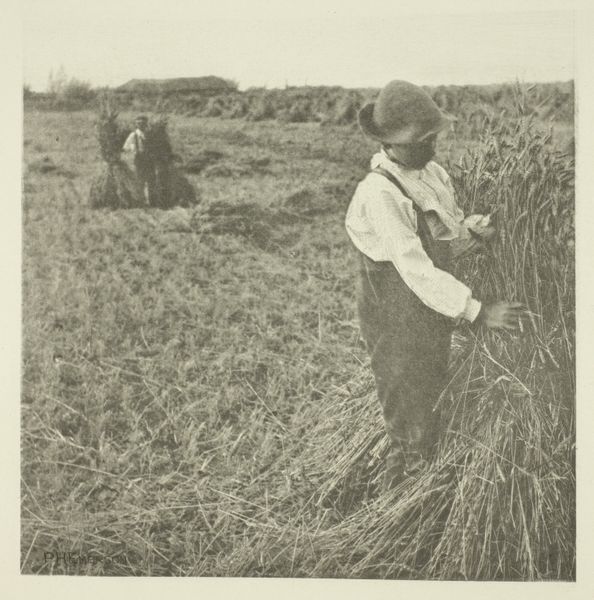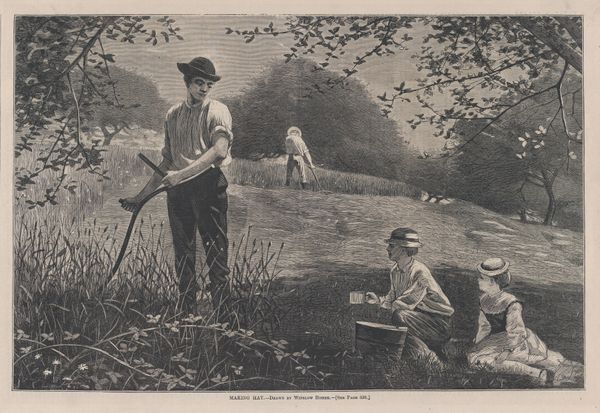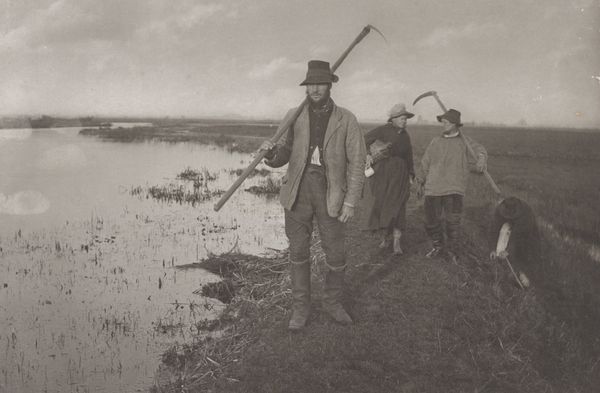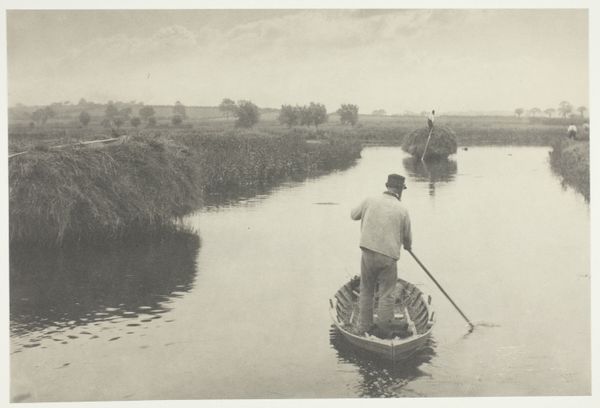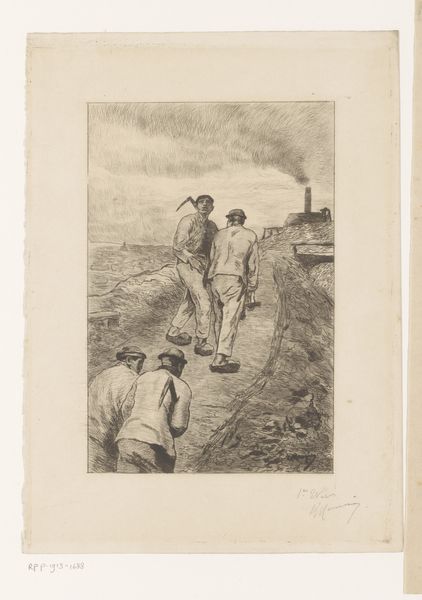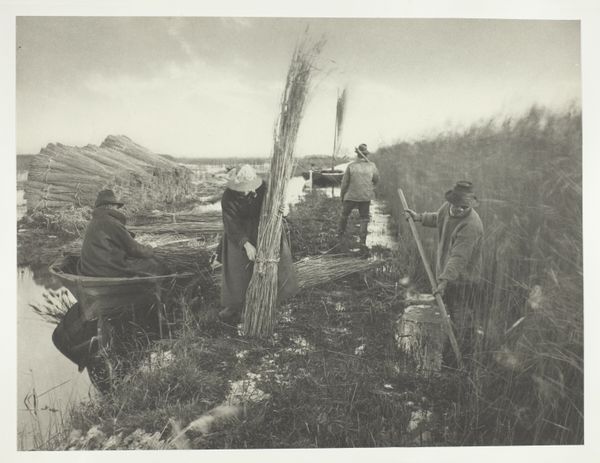
print, photography, gelatin-silver-print
# print
#
impressionism
#
dog
#
landscape
#
nature
#
photography
#
gelatin-silver-print
#
monochrome photography
#
nature
Dimensions: 18.7 × 28.8 cm (image/paper); 28.6 × 40.9 cm (album page)
Copyright: Public Domain
Curator: Before us is Peter Henry Emerson's "Snipe-Shooting," a gelatin-silver print from 1886. It's part of his ambitious project to document rural East Anglia. Editor: My first thought? Misty mornings, quiet landscapes…it feels like stepping into a dream, a memory half-faded. The reflections are almost haunting, blurring the line between reality and the beyond. Curator: Absolutely. Emerson advocated for photography as an art form, distinct from mere documentation. He meticulously controlled every stage, from capturing the image to printing. Editor: I’m drawn to the monochrome palette. It strips away the distractions, making you focus on texture and light. The marshy ground, the men wading… It feels primal, the hunt itself an age-old dance. I think it’s funny though; he probably didn't realize then that there were other ways to “capture” the world without having to kill anything. Curator: Indeed. What’s critical here is Emerson’s emphasis on the labour process. Snipe hunting was work and leisure for these individuals in the East Anglian wetlands, highlighting that engagement. Consider also, he deliberately employed a soft focus, departing from prevailing notions of photographic realism. This technique creates that evocative, ethereal mood you identified. Editor: Soft focus! It’s like he’s painting with light, and letting serendipity dictate the final strokes. I can smell the marsh, hear the birds taking flight...it really sucks you in, and then you almost can't look away, hoping to catch one last secret it'll share. The hunter at the foreground with his trusty dog at the front just sells it so effortlessly! Curator: Right. It also raises questions about representation and social class in the late 19th century, it speaks volumes about both the subjects and Emerson's position as observer. Editor: I appreciate that duality. It's an invitation to get lost in the image, not just to analyze it, you know? But all those things—labor, class, landscape, even death, are wrapped inside of this simple frame. Makes you feel you’ve actually witnessed the event unfold, but with that dreamy twist—I adore that. Curator: Ultimately, it is this complex and intimate perspective that makes Emerson such a compelling artist for both social scientists and artistic impressionists alike. Editor: A final lingering sense that perhaps some places and activities are never quite captured, but always somehow slipping away. Which is exactly how memories feel sometimes.
Comments
No comments
Be the first to comment and join the conversation on the ultimate creative platform.
